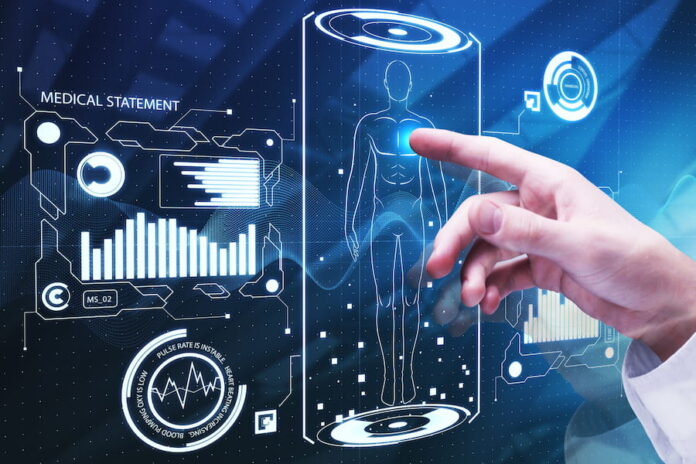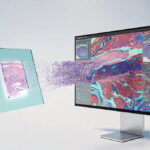What is Health IT?
In the United States, the drug overdose crisis is still prevalent and continues to increase at pace. The CDC (Centers for Disease Control and Prevention) cites that an estimated 107,000 Americans died as a result of drug overdoses in 2021, which is up almost 15% from 2020 when there were 93,655 deaths estimated.
Steps are of course being taken to mitigate this crisis and prevent an escalation in deaths. One of the strategies being implemented is the use of Health IT.
Health IT allows health care providers to effectively and more cost-efficiently manage the care of their patients through private and secure online health records, so that all their details are recorded and available digitally and can be shared and accessed by a wide system of care providers. Health IT helps to facilitate the best and most appropriate level of care across the board, whether that’s for a routine medical visit or check-up, or a medical emergency. Care can be effectively co-ordinated and both patients and their families are able to participate more fully in decisions regarding their own healthcare. The information stored digitally will also help in diagnosing health problems and conditions earlier and assist in reducing medical care errors.
The health information technology initiative from the AHRQ forms part of the strategy of the United States to integrate health IT into primary care.
How will health IT help to address the drug overdose crisis?
Between 2018 and 2022, the ONC and the CDC came together to develop an interactive resource and tool named the Integration Framework. This was developed as part of ongoing efforts to use health IT in an attempt to bring down the increasing rate of deaths in the country due to drug overdose. The Integration Framework offers guidance to states to allow them to effectively integrate medical care providers’ health IT systems and state Prescription Drug Monitoring Programs (PDMPs).
The Integration Framework offers advice on how to help counteract the crisis with the implementation of advanced technologies like electronic clinical decision support (CDS) systems. The Framework can also assist in furthering and scaling PDMP integration with health IT systems in various care settings like primary care, hospitals, and outpatient facilities. Health IT systems will incorporate electronic health record (EHR) systems, pharmacy systems and health information exchanges.
At state-level, clinicians’ guided utilization of PDMPs is an encouraging intervention, with the aim of improving the prescribing of opioids, supporting safer and more beneficial care of all patients, and bettering clinical practice. PDMP data and EHR systems coming together will address barriers to care due to access issues, and mean a beneficial link is in place between the healthcare community and the experts and researchers working on making Health IT the most advantageous and useful it can be.
Read Also
- Automated Healthcare Software Solutions: How Intelligent Platforms Are Redefining Clinical, Administrative, and Operational Excellence
 The healthcare industry is undergoing a seismic transformation. Rising patient volumes, value-based care models, staffing shortages, and complex regulatory demands have prompted organizations to look beyond traditional tools and embrace advanced software automation. As providers search for innovative partners capable of tailoring these sophisticated systems to real-world workflows, many turn to MCSI (Managed Care Systems,… Read more: Automated Healthcare Software Solutions: How Intelligent Platforms Are Redefining Clinical, Administrative, and Operational Excellence
The healthcare industry is undergoing a seismic transformation. Rising patient volumes, value-based care models, staffing shortages, and complex regulatory demands have prompted organizations to look beyond traditional tools and embrace advanced software automation. As providers search for innovative partners capable of tailoring these sophisticated systems to real-world workflows, many turn to MCSI (Managed Care Systems,… Read more: Automated Healthcare Software Solutions: How Intelligent Platforms Are Redefining Clinical, Administrative, and Operational Excellence - Why Whole Slide Imaging Shapes the Future of Digital Pathology
 Whole slide imaging has become one of the most important developments in modern pathology. It changes how tissue is examined, how cases are shared and how pathologists collaborate with the wider care team. More than a technological upgrade, it represents a shift in how laboratories think about their workflow, their storage needs and the tools… Read more: Why Whole Slide Imaging Shapes the Future of Digital Pathology
Whole slide imaging has become one of the most important developments in modern pathology. It changes how tissue is examined, how cases are shared and how pathologists collaborate with the wider care team. More than a technological upgrade, it represents a shift in how laboratories think about their workflow, their storage needs and the tools… Read more: Why Whole Slide Imaging Shapes the Future of Digital Pathology - Comparing 2025 Dental Practice Management Software Options
 Software Key Strengths Potential Limitations Best For Dentimax • Offers both cloud-based and on-premise/server deployment. • Tight integration between imaging (e.g. X-ray sensors) and practice management, charts, treatment planning, imaging all in one. • Transparent pricing and relatively simple UI/usability; solid for small to medium general practices. • May lack some of the… Read more: Comparing 2025 Dental Practice Management Software Options
Software Key Strengths Potential Limitations Best For Dentimax • Offers both cloud-based and on-premise/server deployment. • Tight integration between imaging (e.g. X-ray sensors) and practice management, charts, treatment planning, imaging all in one. • Transparent pricing and relatively simple UI/usability; solid for small to medium general practices. • May lack some of the… Read more: Comparing 2025 Dental Practice Management Software Options - Top Innovations in Dermatology and Skincare Technologies
 Have you ever wondered how skincare keeps getting better year after year? From fighting acne to reducing wrinkles, today’s treatments seem more advanced than ever before. The tools and techniques used by dermatologists today are smarter, safer, and more effective than those we had just a few years ago. These breakthroughs don’t just help with… Read more: Top Innovations in Dermatology and Skincare Technologies
Have you ever wondered how skincare keeps getting better year after year? From fighting acne to reducing wrinkles, today’s treatments seem more advanced than ever before. The tools and techniques used by dermatologists today are smarter, safer, and more effective than those we had just a few years ago. These breakthroughs don’t just help with… Read more: Top Innovations in Dermatology and Skincare Technologies - Telehealth and Beyond: Building a Connected Continuum of Care
 Healthcare is on the verge of a radical transformation. Technology no longer simply supports medicine; it actively shapes how care is delivered and experienced. Achieving a seamless continuum demands more than deploying tools—it requires intentional design, coordinated teamwork, and innovative platforms that adapt to diverse clinical and patient needs. This article explores key strategies for… Read more: Telehealth and Beyond: Building a Connected Continuum of Care
Healthcare is on the verge of a radical transformation. Technology no longer simply supports medicine; it actively shapes how care is delivered and experienced. Achieving a seamless continuum demands more than deploying tools—it requires intentional design, coordinated teamwork, and innovative platforms that adapt to diverse clinical and patient needs. This article explores key strategies for… Read more: Telehealth and Beyond: Building a Connected Continuum of Care
Examples of health IT
Smart phone Apps
The use of purpose-built Apps, devised by clinical experts, to aid a patient’s recovery from substance abuse and addiction. The apps can support in all practical and emotional aspects of recovery and are available in an immediate way.
Telehealth
Video conferencing, webinars and advice-based broadcasts can offer remote care that may otherwise be unable to be accessed.
ePrescription of controlled substances
This can help safeguard against the misuse of substances and reduce clinicians’ workloads.
Support tools for clinical decision-making
Online tools to support prescribing, treatment, and outcomes.
The exchange of great numbers of quality data
This can help with predictive analysis, decisions, and the utilization of artificial intelligence, in the development of machines and machine learning.
The Search and Rescue Initiative
This is a site of tools and resources to help doctors identify, address, and make reductions in any opioid misuse in their practice.
The drug overdose crisis in the US is not one that it going to disappear overnight, but the integration of health IT into current systems does offer a positive step in the right direction that, with technological advances, clinicians and health professionals can make some inroads into lessening the number of deaths due to drug overdoses.
About Author
George J. Newton is a business development manager at Dissertation writing services who writes on the subject of health and well-being.






